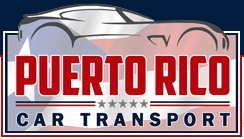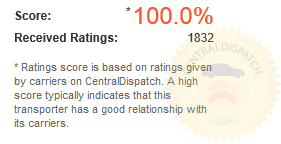Shipping your vehicle to Puerto Rico offers significant convenience for residents, military personnel, and businesses alike. While Puerto Rico shares many similarities with the mainland as a U.S. territory, transporting vehicles to the island comes with distinct considerations—particularly regarding taxes and fees that can substantially impact your overall costs.
One of the most significant challenges vehicle owners face when shipping to Puerto Rico is the excise tax (arbitrios) imposed on imported vehicles. This tax is separate from your shipping costs and must be paid directly to Puerto Rican authorities upon your vehicle’s arrival. Being unprepared for this substantial expense can lead to delays, storage fees, and unnecessary stress during your relocation process.
Beyond taxes, vehicle owners must also manage documentation requirements, proper vehicle preparation for overseas transport, and the selection of appropriate shipping methods. These factors affect not only your costs but also the timeline and success of your vehicle transport. This guide covers everything you need to know about shipping your vehicle to Puerto Rico, with a special focus on tax considerations that will help you avoid unexpected complications or expenses.
An Overview of the Vehicle Shipping Options to Puerto Rico
When transporting your vehicle to Puerto Rico, you have several shipping options to consider. Each comes with different costs, convenience levels, and logistical considerations. Understanding these options will help you make the most informed decision for your specific situation.
Door-to-Port vs. Port-to-Port Shipping
When shipping your vehicle to Puerto Rico, you have two primary service options to choose from based on your needs and preferences:
- Door-to-Port Service: Your vehicle is picked up directly from your residence or business anywhere in the mainland U.S. and transported to the departure port. From there, it’s loaded onto a vessel bound for San Juan, where you or your representative will need to collect it upon arrival.
- Port-to-Port Service: You deliver your vehicle directly to the departure port (typically Jacksonville, FL or Pennsauken, NJ), where it’s then transported to the port in San Juan. This option is generally more economical but requires you to handle transportation to the mainland port yourself.
For most customers, door-to-port service offers the most convenience and eliminates the hassle of driving your vehicle to a departure port, which may be hundreds of miles from your location.
RoRo Shipping Explained
Roll-on/Roll-off (RoRo) shipping is the standard service for Puerto Rico vehicle transport. This method involves:
- Vehicles being driven directly onto the vessel
- Secure fastening to prevent movement during transport
- Protection from outdoor elements that would typically affect vehicles on open-air barges
- A cost-effective solution for standard vehicles
RoRo is considered the most secure and affordable way to ship vehicles to and from Puerto Rico. Vehicles are safely loaded into the actual ship or barge and protected throughout the journey, making it an excellent option for most car shipping needs.
Timeframes and Shipping Logistics
Transit times vary depending on your origin location, but generally:
- From Florida ports: 7-10 days
- From New Jersey ports: 10-14 days
- For door-to-port service from other locations, add 3-7 days for mainland transit
Once your vehicle arrives in San Juan, it typically takes 2-3 business days for processing before it’s available for pickup.
Documentation Requirements
Proper documentation is essential for smooth vehicle transport to Puerto Rico. You’ll need:
- Vehicle title or lien holder authorization
- Government-issued ID (driver’s license or passport)
- Booking number
- Vehicle registration (current or within 30 days of expiration)
- Notarized authorization letter (if someone else is shipping on your behalf)
Having these documents organized and readily available will help prevent delays in your vehicle’s transport process.
Puerto Rico’s Excise Tax System Explained
When shipping a vehicle to Puerto Rico, the excise tax represents one of the most significant financial considerations beyond the standard car shipping costs. This tax system plays a major role in the island’s economy while directly impacting vehicle importers.
Unlike fees paid to an auto transport company, this government-mandated tax goes directly to the Puerto Rican authorities and serves specific purposes for the island. Let’s examine how this tax works, current rates, and why it exists.
What is Excise Tax and How It Works
The Puerto Rico excise tax, known locally as “arbitrios,” is a tax imposed on vehicles imported to the island. This tax is not paid to your shipping provider but directly to the Puerto Rican government. This tax system functions as an important revenue source for the island.
The excise tax applies to virtually all vehicles entering Puerto Rico, regardless of whether they’re new, used, or previously owned by the importer. Even if you’re bringing your own vehicle for personal use rather than commercial purposes, you’ll still be subject to this tax.
Current Tax Rates
The excise tax rate in Puerto Rico is currently set at approximately 4% of the vehicle’s determined value in Puerto Rico. However, this percentage can vary based on several factors, including:
- The vehicle’s make, model, and year
- The condition of the vehicle
- Current market value in Puerto Rico
It’s important to note that the vehicle’s value is not necessarily what you paid for it but rather what it’s deemed to be worth in Puerto Rico’s market. This valuation system can sometimes result in surprisingly high tax amounts for certain vehicles.
Why Puerto Rico Implements Excise Tax
Puerto Rico has implemented excise taxes for several key reasons:
- Revenue Generation: Unlike the mainland U.S., most Puerto Rican residents do not pay federal income tax. This creates a need for alternative revenue sources.
- Economic Recovery: The island continues to recover from Hurricane Maria and has experienced economic challenges for over a decade.
- Infrastructure Funding: Tax revenue helps maintain ports, roads, and other infrastructure necessary for vehicle imports and transportation.
The excise tax is not designed to discourage vehicle imports (as excise taxes often do for items like tobacco or alcohol in other regions), but rather serves as a necessary funding mechanism for the Puerto Rican government.
How Excise Tax Differs from Mainland Taxes
The Puerto Rico excise tax differs from mainland vehicle taxes in several important ways:
- It’s a one-time payment rather than an annual tax
- It’s based on the vehicle’s value in Puerto Rico’s market, not its original purchase price
- It’s collected at the point of entry (the port) before the vehicle can be released
- The tax is not included in your shipping costs and must be paid separately
These differences are essential to recognize for mainland residents shipping vehicles to Puerto Rico, as the tax structure may differ significantly from what you’re accustomed to in your state.
Calculating Your Excise Tax Liability
Estimating your excise tax liability before shipping your vehicle to Puerto Rico can help avoid financial surprises. The process is straightforward but requires specific information about your vehicle.
To determine your excise tax amount:
- Visit the official Puerto Rico Treasury Department (Hacienda) SURI website
- Enter your vehicle’s VIN number, or the make, model, and year
- Look for “Estimated Arbitration” or “Arbitrio Estimado” in the results
- Translate the page to English if needed by right-clicking and selecting “Translate to English”
- Add this amount to your overall vehicle shipping budget
Several factors influence your final tax amount, including vehicle age, luxury status, and current market demand in Puerto Rico. Newer and premium vehicles typically incur higher taxes based on their assessed value in the Puerto Rican market.
Common mistakes to avoid include underestimating the tax amount, failing to budget for this separate expense, and not having the proper payment method ready when your vehicle arrives. Remember that this tax is separate from your shipping costs and must be paid before your vehicle can be released from the port.
Tax Payment Process and Requirements
Paying your excise tax correctly is essential for retrieving your vehicle promptly after it arrives in Puerto Rico. The process requires visiting the Hacienda Centro de Servicios located at 2 Avenida Juan Ponce de León in San Juan.
When paying your excise tax, remember these key points:
- Payment must be made in person at the designated location
- Bring your government-issued photo ID, vehicle title, and shipping documentation
- Complete the Official Excise Tax Document available at the payment center
- Cash is the most reliable payment method (U.S. dollars)
- Credit cards may be accepted, but their systems are sometimes unavailable
- Personal checks are not accepted
Timing is important—your vehicle cannot be released until the tax is paid, and delays can result in additional port storage charges. Plan to complete this process immediately after your vehicle arrives to avoid unnecessary fees and complications. The entire process typically takes several hours, so arrive during business hours with sufficient time to complete all paperwork and payment steps.
Vehicle Preparation Requirements
Proper vehicle preparation is essential before working with shipping companies to transport your vehicle to Puerto Rico. Following these requirements ensures compliance with regulations and prevents costly delays in the shipping process.
Personal Item Restrictions
- Your vehicle must be completely clean and empty
- Exceptions are limited to child seats, jumper cables, and in some cases, automobile parts for the vehicle
- All personal belongings and valuables must be removed
- Random inspections may occur at the port
Fuel Requirements
- Maintain less than 1/4 tank of gas (Coast Guard regulation #176.905)
- No exceptions are permitted to this rule
- Vehicles exceeding the fuel limit will be rejected until properly emptied
Vehicle Size Considerations
- Standard shipping rates apply to vehicles not exceeding 900 cubic feet
- Larger vehicles require special arrangements and may not qualify for competitive rates
- Oversized vehicles need specialized handling
Required Documentation
Before your scheduled pickup or door-to-door delivery service, ensure you have:
- Vehicle title or lien holder authorization
- Valid government-issued ID
- Current vehicle registration
- Notarized authorization letter (if someone else is handling the process)
- All keys to the vehicle
How Puerto Rico Car Transport Can Help
Navigating the complexities of vehicle shipping to Puerto Rico doesn’t have to be overwhelming. Puerto Rico Car Transport specializes in making this process straightforward and hassle-free for customers across the United States.
With over 30 years of experience in Puerto Rico auto transport, our team handles everything from stateside pickup to all necessary paperwork. We provide:
- Direct door-to-port service from any location in the continental U.S.
- Expert guidance on tax requirements and documentation
- Real-time shipment tracking through our online portal
- Transparent pricing with no hidden fees
- Specialized handling for all vehicle types, including cars, trucks, motorcycles, and oversized vehicles
While we can’t pay the excise tax on your behalf, our knowledgeable shipping coordinators can help you understand what to expect and prepare appropriately. We’ve built our reputation on delivering vehicles safely and efficiently to Puerto Rico, with thousands of satisfied customers across the country.
When you’re ready to transport your vehicle to or from Puerto Rico, trust the experience and dedicated service that only a specialized Puerto Rico shipping expert can provide. Get an instant car shipping quote today.
Frequently Asked Questions
Is excise tax included in vehicle shipping quotes to Puerto Rico?
No, excise tax is a separate government fee paid directly to Puerto Rican authorities and is not included in any shipping quotes. Transport companies cannot include this tax in their pricing or pay it on your behalf.
What happens if I don’t pay the excise tax for my vehicle?
Your vehicle will be held at the port in San Juan and will not be released until the tax is paid in full. Extended storage at the port will result in additional daily fees.


